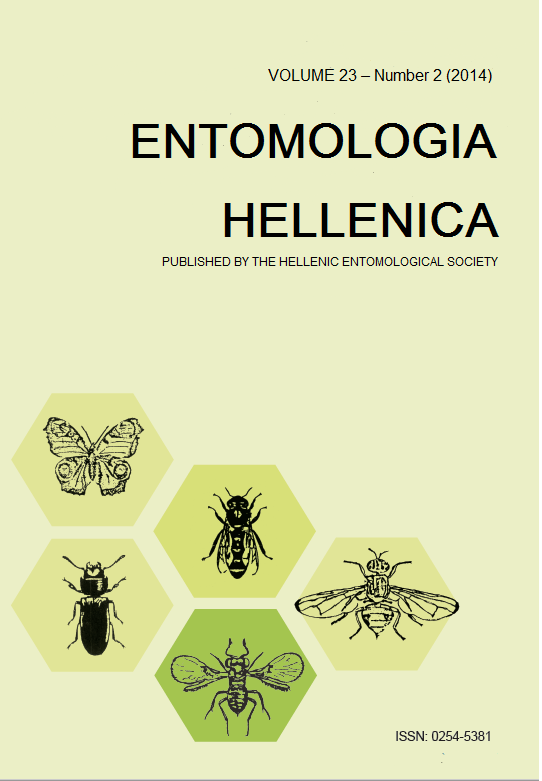Study on the combined action of the entomopathogenic bacterium Bacillus thuringiensis subsp. kurstaki and the entomopathogenic nematode Heterorhabditis bacteriophora

Abstract
The interaction between the entomopathogenic bacterium Bacillus thuringiensis subsp. Kurstaki and the entomopathogenic nematode Heterorhabditis bacteriophora (Heterorhabditidae) was examined against larvae of Ephestia kuehniella (Lepidoptera: Pyralidae) at 7, 14, 21 and 28 days post treatment, in laboratory conditions. Three different combinations of the aforementioned pathogens were tested on 4th instar larvae, namely 500ppm B. thuringiensis subsp. kurstaki (B.t.k.) and H. bacteriophora infective Juveniles (1000IJs/ml), 1500ppm B.t.k. and H. bacteriophora (1000IJs/ml) and 3000ppm B.t.k. and H. bacteriophora (1000IJs/ml). At 7, 14 and 21 days, the interaction between the pathogens was additive in two of the treatments and synergistic in one, whereas at 28 days, it was negative in two of the treatments and synergistic in one. Overall, the application of the lowest dose of B.t.k. (500ppm) in combination with H. bacteriophora (1000IJs/ml), turned out to be highly effective. The interaction between B. thuringiensis and H. bacteriophora is to be further examined.
Article Details
- How to Cite
-
Zampara, I., Zamparas, C., Mantzoukas, S., & Karanastasi, E. (2014). Study on the combined action of the entomopathogenic bacterium Bacillus thuringiensis subsp. kurstaki and the entomopathogenic nematode Heterorhabditis bacteriophora. ENTOMOLOGIA HELLENICA, 23(2), 74–86. https://doi.org/10.12681/eh.11539
- Issue
- Vol. 23 No. 2 (2014)
- Section
- Articles

This work is licensed under a Creative Commons Attribution-NonCommercial-ShareAlike 4.0 International License.
Authors who publish with this journal agree to the following terms:
Authors retain copyright and grant the journal right of first publication with the work simultaneously licensed under a Creative Commons 4.0 license.
Authors are able to enter into separate, additional contractual arrangements for the non-exclusive distribution of the journal's published version of the work (e.g. post it to an institutional repository or publish it in a book), with an acknowledgement of its initial publication in this journal. Authors are permitted and encouraged to post their work online (preferably in institutional repositories or on their website) prior to and during the submission process, as it can lead to productive exchanges, as well as earlier and greater citation of published work.


